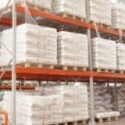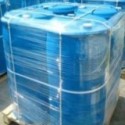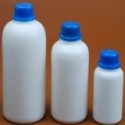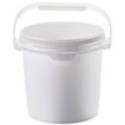 |
Beta Cyclodextrin or Betadex USP NF BP Ph Eur FCC Food Grade Supplier Exporter Manufacturers' Representative |
Email: info@ammol.org |
Call Toll Free +1-855-552-6665 |
Quick Links to Products: Benzododecinium Bromide | Benzalkonium Chloride | Beta Cyclodextrin or Betadex | Boron Citrate | Boron Glycinate | Bronopol | 4-Bromobiphenyl | Buclizine Hydrochloride | Butyric Acid | and more -- |
Beta Cyclodextrin or Betadex or Caraway or Cycloheptaamylose or Cyclomaltoheptaose or Schardinger beta-Dextrin
CAS Number: 7585-39-9
Molecular Formula: C42H70O35 or (C6H10O5)7
Molecular Weight: 1134.98

Beta Cyclodextrin or Betadex or Caraway or Cycloheptaamylose or Cyclomaltoheptaose or Schardinger beta-Dextrin
General Properties of Betadex or β-Cyclodextrin or Caraway or Cycloheptaamylose or Cyclomaltoheptaose or Schardinger β-Dextrin:
Appearance: White to slight orange or green powder or crystal.
Assay: 99% minimum.
Water: 14% maximum.
Melting point: 290C to 300C literature.
Soluble: Sparingly soluble in water; freely soluble in hot water; slightly soluble in ethanol. It is used in food as flavoring agent or adjuvant, and as formulation aid.
Appearance of solution in hot water: Almost transparent.
Specifications of Betadex USP NF Grade:
(C6H10O5 )7 1134.98
Beta Cyclodextrin --- CAS 7585-39-9.
DEFINITION
Betadex is a nonreducing cyclic compound composed of seven alpha-(1–4) linked d-glucopyranosyl units. It contains NLT 98.0% and NMT 102.0% of betadex (C6H10O5)7, calculated on the anhydrous basis.
IDENTIFICATION
A. Infrared Absorption: On undried specimen
B. The retention time of the major peak of the Sample solution corresponds to that of the Standard solution, as obtained in the Assay.
C. It meets the requirements of the test for Optical Rotation.
D.
Sample: 0.2 g
Analysis: Mix the Sample with 2 mL of iodine, warm in a water bath to dissolve, and allow to stand at room temperature.
Acceptance criteria: A yellow-brown precipitate is formed.
ASSAY
To pass the test.
Acceptance criteria: 98.0% to 102.0% on the anhydrous basis
Residue on Ignition: NMT 0.1%
Limit of Reducing Sugars:
To pass the test.
Acceptance criteria: 0.2%; the absorbance of the Sample solution is NMT that of the Standard solution.
Limit of Light-Absorbing Impurities:
To pass the test.
Acceptance criteria:
Absorbance:
NMT 0.10, 230 to 350 nm
NMT 0.05, 350 to 750 nm
Related Compounds:
To pass the test.
Acceptance criteria:
Alpha cyclodextrin: 0.25%; the area of any peak corresponding to alpha cyclodextrin is NMT 0.5 times the area of the corresponding peak from the Standard solution.
Gamma cyclodextrin: 0.25%; the area of any peak corresponding to gamma cyclodextrin is NMT 0.5 times the area of the corresponding peak from the Standard solution.
Other related substances: 0.5%; the sum of all of the peak areas, excluding the alpha cyclodextrin, beta cyclodextrin, gamma cyclodextrin, and artifact peaks is NMT the area of the peak due to betadex (beta cyclodextrin) from the Standard solution.
Microbial Enumeration Tests and Tests for Specified Microorganisms: The total aerobic microbial count does not exceed 103 cfu/g, and the total combined molds and yeasts count does not exceed 102 cfu/g. It meets the requirements of the tests for absence of Salmonella species and Escherichia coli.
Optical Rotation, Specific Rotation:
Sample solution: 10 mg/mL in water
Acceptance criteria: 160° to +164°, determined at 20C
Water Determination: NMT 14.0%
Color and Clarity of Solution:
Sample solution: Dissolve 0.2 g in 20.0 mL of freshly boiled and cooled water.
Acceptance criteria: The resulting solution is clear and colorless.
pH:
Sample solution: Add 0.1 mL of a saturated solution of potassium chloride to 10 mL of a 10 mg/mL aqueous solution of Betadex.
Acceptance criteria: 5.0 to 8.0
Specifications of Betadex BP Ph Eur Grade:
Betacyclodextrin
[C6H10O5]7 --- 1135 --- CAS 7585-39-9
Action and use: Carrier molecule for drug delivery systems.
DEFINITION
Cycloheptakis-(1→4)-(α-d-glucopyranosyl) (cyclomaltoheptaose or β-cyclodextrin).
Content: 98.0 per cent to 101.0 per cent (dried substance).
CHARACTERS
Appearance: White or almost white, amorphous or crystalline powder.
Solubility: Sparingly soluble in water and in propylene glycol, practically insoluble in anhydrous ethanol and in methylene chloride.
IDENTIFICATION
A. Specific optical rotation (see Tests).
B. Examine the chromatograms obtained in the assay.
Results: The principal peak in the chromatogram obtained with test solution (b) is similar in retention time and size to the principal peak in the chromatogram obtained with reference solution (c).
C. Dissolve 0.2 g in 2 mL of iodine solution by warming on a water-bath, and allow to stand at room temperature. A yellowish-brown precipitate is formed.
TESTS
Solution S: Dissolve 1.000 g in carbon dioxide-free water with heating, allow to cool and dilute to 100.0 mL with the same solvent.
Appearance of solution: Solution S is clear.
pH: 5.0 to 8.0.
To 10 mL of solution S add 0.1 mL of a saturated solution of potassium chloride.
Specific optical rotation: + 160 to + 164 (dried substance), determined on solution S.
Reducing sugars: Maximum 0.2 per cent.
Light-absorbing impurities: Examine solution S between 230 nm and 750 nm. Between 230 nm and 350 nm, the absorbance is not greater than 0.10. Between 350 nm and 750 nm, the absorbance is not greater than 0.05.
Related substances:
To pass the test by Liquid chromatography.
Limits:
-impurities A, B: for each impurity, not more than 0.5 times the area of the corresponding peak in the chromatogram obtained with reference solution (b) (0.25 per cent);
-sum of impurities other than A and B: not more than 0.5 times the area of the peak due to betadex in the chromatogram obtained with reference solution (b) (0.5 per cent).
Residual solvents: To pass the test by gas chromatography.
Limits:
-trichloroethylene: maximum 10 ppm;
-toluene: maximum 10 ppm.
Loss on drying: Maximum 16.0 per cent, determined on 1.000 g by drying in an oven at 120C for 2 h.
Sulfated ash: Maximum 0.1 per cent, determined on 1.0 g.
Specifications of beta-Cyclodextrin FCC Food Grade:
β-Cyclodextrin; BCD
(C6H10O5)7 Formula weight 1135.0
INS: 459 CAS 7585-39-9
DESCRIPTION
Beta-Cyclodextrin occurs as a white, fine, crystalline solid, frequently a fine, crystalline powder. It is a nonreducing cyclic compound consisting of seven alpha-(1,4) linked D-glucopyranosyl units. It is slightly soluble in water.
Function: Encapsulating agent; stabilizer.
Identification:
A. The infrared absorption spectrum of a potassium bromide dispersion of sample exhibits relative maxima at the same wavelengths as those of a similar preparation of USP beta-Cyclodextrin Reference Standard.
B. The retention time of the major peak in the chromatogram of Assay Preparation corresponds to that in the chromatogram of Standard Preparation, obtained as directed in the Assay.
Assay: Not less than 98.0% and not more than 101.0% of (C6H10O5)7 as beta-Cyclodextrin, calculated on the anhydrous basis.
Lead: Not more than 1 mg/kg.
Optical (Specific) Rotation [α]D20°: Between +160° and +164°, calculated on the anhydrous basis.
Reducing Sugars (dextrose equivalent): Not more than 1.0%, calculated on the anhydrous basis.
Residue on Ignition: Not more than 0.1%.
Toluene: Not more than 1 mg/kg.
Trichloroethylene: Not more than 1 mg/kg.
Water: Not more than 14.0%.
Please visit SDS Safety Data Sheet of Beta Cyclodextrin or Betadex Suppliers.
American Molecules, also known as ammol.org is a distributor, supplier and manufacturers' representative of all types of Pharmaceuticals, Functional Ingredients, Excipients and Specialty Chemicals in Texas USA. Our principals manufacture supply and export USP NF BP, Ph Eur, etc grades of chemicals pure and reagent grade, mineral fortifiers, FCC food grade. Tailor made particle size and customized specifications are offered. The principal's facility is having one or more of the certifications like FDA approval and GLP, cGMP, ISO9001, ISO14001, ISO/IEC 17025, ISO22000, FSSC 22000, ISO45001, FSSAI, Kosher, HALAL, COPP, WHO-GMP certified and Written Confirmation (WC) for export to Europe is available. The manufacturers suppliers and exporters observe WHO Good Manufacturing Practices and Good Laboratory Practices.





Suppliers and Manufacturers' Representative:

9910 Bent Oak Dr
Houston, TX 77040, USA
Call Toll Free: 1-855-55-AMMOL 1-855-552-6665
Email: info@ammol.org